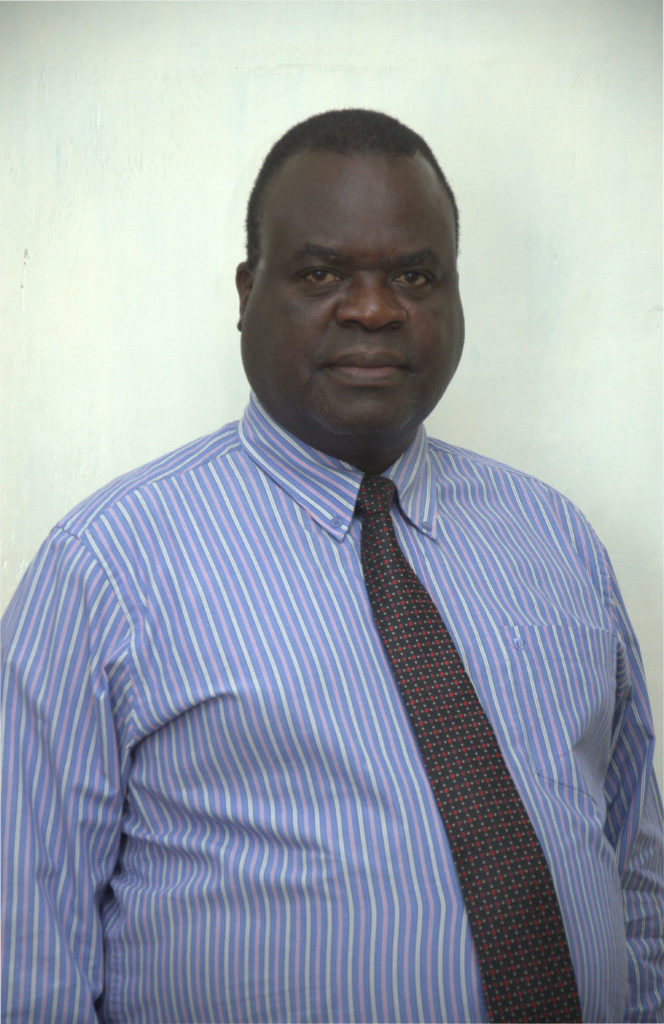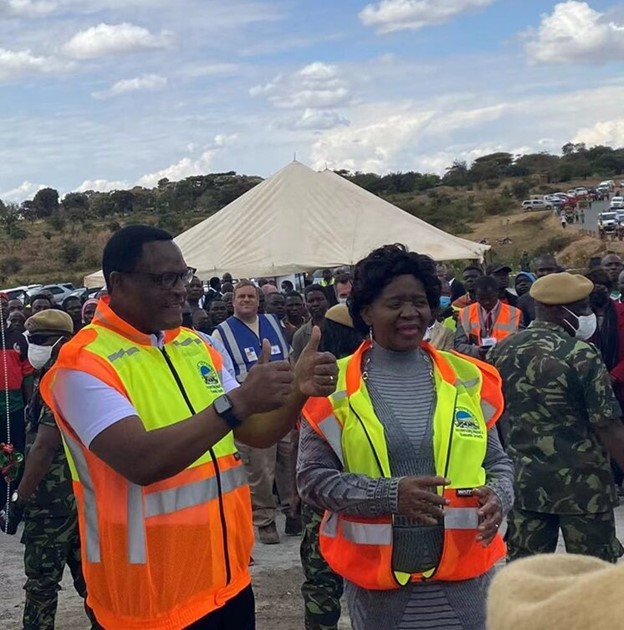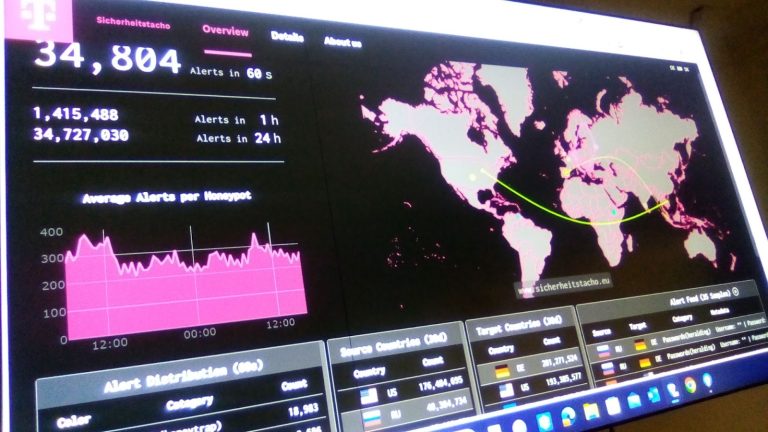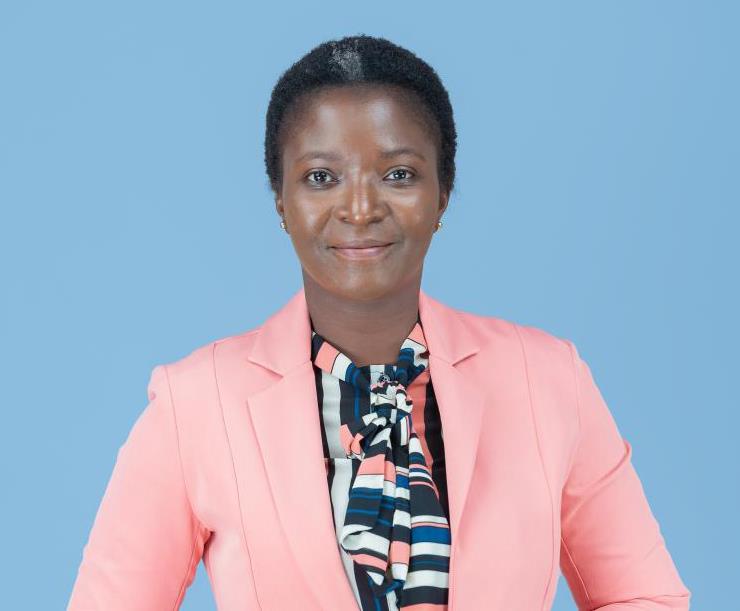BY JACK MACBRAMS
Kottana Chidyaonga who died on January 3, 2020, under contentious cause, seems to have put up an ardent fight from her grave to win against all controversies that led to her death.
This follows a verdict reached by Medical Council of Malawi disciplinary committee after finding Malawi’s leading pathologist Dr. Charles Dzamalala guilty for his questionable post-mortem report following the death of Lilongwe resident.
The story was exclusively broken by the Platform for Investigative Journalism in February.
Although her friends claimed that Kottana, aged 22, had stepped on and had been bitten by a snake, in his report, Dr. Dzamalala concluded that she had been poisoned
Dr. Dzamalala, who had been engaged by the family to conduct a forensic post-mortem to establish the exact cause and mode of death, said he found evidence of the toxic substance, temik, in Kottana’s body and concluded that she died of unnatural causes.
“The death…was due to generalised haemolysis following acute poisoning with a pesticide called temik…Based on the circumstances surrounding this death, as per narration above, this incidence of acute poisoning is most probably due to a homicidal act rather than suicidal or accidental,” he wrote in his January 13, 2020, report.
Based solely on Dr. Dzamalala’s medical opinion, on January 15, 2020, 12 days after Kottana’s death, Police arrested Kottana’s boyfriend Timothy ‘Timmy’ Ntilosanje, Diana Bhagwanji as well as Gilbert Kamaliza, and Ekaree Daniela Chaweza for murder.
This is premised on the fact that Kottana had been poisoned between 9 pm and 11 pm, during which time she had encountered the four individuals.
“The particulars of the alleged offence are that Timothy Ntilosanje and three others during the night of 3rd January 2020 at Area 3 in the district of Lilongwe, with malice afterthought, caused the death of Kottana Chidyaonga,” reads the State’s submission to the court.
However, the court found the four not guilty of murder.
In an interview with PIJ, Medical Council of Malawi (MCM) assistant registrar Richard Ndovie said the council has since issued a warning to the famed forensic pathologist after finding him guilty.
“The council discussed the case and determined that the late Kottana Chidyaonga forensic pathology report is inconsistent with standard practice for performing and issuing forensic pathology report because the laboratory he used to determine the causation of death as termik did not have reagents to elicit the levels of venom and the levels of anaesthetic drug, vecuronium that maybe the most likely to contribute to the causation of death,” reads the Board’s determination.
Ndovie said there were professional issues that were found that Dr. Dzamalala has to attend to.
“He has to conduct his job as a forensic pathologist with due diligence and following due process. The warning means the council doesn’t want to hear the same issues about him again,” he said.
However, Ndovie said he could not share the council’s determination on Dr. Ruth Chimutu and PolyClinic who are accused of mistakenly administering the lethal drug vecuronium bromide instead of anti-venom.
“We have not delivered the letter to her so we do not want her to hear of her determination from anyone except us,” he said.
In an interview, Dr. Dzamalala referred PIJ to his lawyer James Naphambo who said his client is appealing the verdict.

“He is dissatisfied with the findings and he has instructed us to proceed with an appeal,” Naphambo said.
On his part, Timmy told PIJ that Dr. Dzamalala’s guilty verdict is a relief as it proves that “there was more to it than was out it there”.
“It has taken over a year and half but I am glad that the truth has come out. Hearing from them [Medical Council] that Dr. Dzamalala misconducted his autopsy brings a sense of closure,” he said.
But Timmy demanded that people should be held responsible.
“In the literal sense, someone has to pay for all the things that happened. And not only Dr. Dzamalala, but even the State machinery, they knew what they were doing because the case was initially closed after it was reported but it was only reopened following Dr. Dzamalala’s report.
“I would want that the same way they wanted to hold us accountable, they should hold these people accountable. Due process has to be followed,” he said.
A medical doctor, who opted for anonymity for fear of reprisals, accused the Medical Council of being soft on Dzamalala.
“This is clear case of shielding one of their own because the punishment is ridiculous. Four young people went to jail because of Dr. Dzamalala’s autopsy and all he gets is a slap on the wrist?” he said.
In the aftermath of the case, Timmy lodged a complaint with the Medical Council of Malawi against Dr. Dzamalala’s conduct.

In the January 4, 2021 letter which was also copied to the Ministry of Health, Timmy accuses Dr. Dzamalala’s of having drawn a preconceived conclusion before he even began the autopsy.
“He has a suspected cause of death on the mortuary card. The issue is why did he think to conduct a test for temik first before the suspected cause of death? One would ‘assume/suspect’ that the temik is what he wanted to find by specifically conducting that test, and not what the facts on the table were.
“And…he ignored to conduct the said tests as he had already settled his report on the pesticides suspicion, ignoring facts surrounding her sudden passing,” Timmy writes in the complaint.
He further accuses Dr. Dzamalala of tampering with the specimen as the Police did not escort him from the mortuary to the laboratory as per law, which demands that the Police should supervise the process so that it is not affected by any fraud or specimen tampering with samples.
“To this regard, there is a high ‘probability’ that these samples/specimens were tampered with or spiked in transit in the process of taking them to the lab, which he did alone and unsupervised. His report, therefore, lacks credibility,” Timmy says in his letter.
Therefore, Timmy contends in his letter, that Dr. Dzamalala might not have done the actual test, or he deliberately ignored some things.
Among other things, Timmy says Dr. Dzamalala drew his conclusion based on “a strong index of suspicion” and not scientific proof. “When the science had to come first since that is what he is qualified for and not probability which is based on assumptions.”
In the letter, Timmy appealed to the Medical Council of Malawi to carefully look into Dr. Dzamalala’s conduct to ensure liability, accountability, and instill trust in the Malawi medical system without looking at rank, qualification, or influence.
“With the issues raised above, I am tempted to conclude that this is how he conducts his autopsies as such, many innocent people could be languishing in jail because of him. And, for the integrity of future reports, it is important that you look into his conduct and assure the nation that he acts above board ethically and professionally,” he says.
Timmy also called for a review and regulation of the autopsy process in the country to ensure neutrality.
“…these are asked for by the deceased’s family directly to the pathologist, already with a hint of suspicion when, in fact, a complaint should perhaps be filed with the Police and for the Police to make a neutral request because if the process is not regulated, these will continue to become ‘autopsy reports for sale.”
But in an interview with PIJ at the time, Dr. Dzamalala dismissed fears that he could have tampered with the specimen.
“Let’s say, for argument’s sake, I indeed put temik in the samples but how could I have removed the snake venom and the vecuronium from the specimen? They should have been detected by the toxicology tests,” he said.
Dzamalala Defends Autopsy Report
In his autopsy report, Dr. Dzamalala further concludes that the snake bite narrative lacks scientific evidence and is, therefore, best ignored.
“A typical snakebite wound is visibly fresh, leads to swelling from about a quarter of an hour after the bite, and takes specific shapes (arc for non-venomous bites and linear or otherwise for venomous bites). The alleged snake bite wound on the body of late Kottana Maria Chidyaonga lacked all these classical supporting features on the skin surface, both grossly and microscopically,” he infers.
Having concluded that Kottana had died because of acute temik poisoning based on toxicology tests carried out at the Toxicology Unit in Lilongwe, Dr. Dzamalala told the court that he abandoned further tests, including snake venom and drugs.
Under cross-examination, Dr. Dzamalala acknowledged the existence of vecuronium bromide, which was wrongly administered to the patient, he argued that it was not fatal.
When confronted further, he became defensive and challenged that he was prepared to defend his position and findings at all costs.
Dr. Dzamalala told the court that he had been paid by Kottana’s family to conduct the autopsy, at which point the defence lawyer asked him the number of times that he had been paid to do an autopsy and the results have come out against the suspicions of those who paid for it.
The court has it on record that he refused to answer this question.
In an interview with PIJ, Dr. Dzamalala explained the process that led him to conclude that Kottana was poisoned.
He explained that when he commenced the autopsy, he noticed that there were tell-tale signs of poisoning such as a bulge in the stomach bowel.
The pathologist noted that the toxicology results conducted at the Central Veterinary Laboratory in Lilongwe confirmed his fears when the specimen tested positive for temik.
“There are three results that can emanate from the toxicology tests. The first is that there will be no traces of poison in the samples. The second is that they could find traces of poison that matches the poisons that the lab has in their inventory. And the third is that the test could find poison that does not match what they have in their poison inventory,” he said.
He explained that after the samples returned positive for temik poison, he abandoned further investigations.
“Because if there were indeed other elements in the specimen, such as vecuronium bromide or snake venom, they should have been detected by the toxicology tests as a third option, one which was not in the inventory and we could have sent the samples outside for further tests to determine the poison,” he said.

In drawing the conclusion that Kottana’s case was homicide and not suicide, Dr. Dzamalala said he based this on the fact that suicide is prompt while homicide is meticulous.
“When someone has decided to kill themselves with temik, they do it promptly without too much thought while when you want to kill yourself, you take your time to plan.
“Medically, what this means is that, in suicide cases, the victim ingests the poison quickly, and as such, you will find granules in the stomach as the first diluted granules of temik will kill you instantly, but some remnants will be seen in the stomach. While in homicide cases, you know that if you put temik in the drink or food, the person will notice it, so you dilute it first before mixing it with the drink. In Kottana’s case, there were absolutely no granules of temik,” he said.
Experts Differ with Dzamalala
However, in a twist of events, several medical experts have discredited Dr. Dzamalala’s autopsy.
A January 28, 2020, report from the Ministry of Health to the Director of Criminal Investigations at Area 30 clearly states that Chidyaonga died because Care Polyclinic administered a wrong drug—a clear case of medical negligence.
A damning five-page report, authored by top government medical experts Dr. Samson Mndolo and Dr. Frank Sinyiza, notes that when she arrived at the clinic, Chidyaonga was not given anti-venom as should have been the case for someone who had been bitten by a snake. Dr. Mndolo is hospital director at Queen Elizabeth Central Hospital, while Dr. Sinyiza is hospital director at Mzuzu Central Hospital.
Care Polyclinic tried to cover up their mistake by claiming that they had administered antivenom. But the two government doctors clearly point this out as a lie.
“Antivenom is nowhere on the list of items used, despite the patient’s notes showing it was given as an infusion…Why didn’t the hospital bill the antivenom if it was one of the drugs used?” Mndolo and Sinyiza wonder in their report.
The two doctors note in the report, that instead of antivenom, the clinician administered a drug called vecuronium.
“When one compares the doctor’s notes with the billing list of items, it becomes confusing. The notes state that antivenom was given, but the list of medicines on the billing sheet does not have it. Instead, [the billing list] has vecuronium which is never mentioned in the doctor’s notes,” adds the report.
The doctors, thus, conclude that the muscle relaxant vecuronium may have been mistaken for antivenom and was given straight to the bloodstream as treatment for the snake bite.
According to the Mndolo/Sinyiza report, almost all patients stop breathing after getting a dose of muscle relaxants such as vecuronium.
“If breathing is not assisted on time, the heart can stop as a result of oxygen deprivation, a state called cardiac arrest,” the report reads.
According to the doctors, when vecuronium is administered to a patient with respiratory support, as the respiratory muscles slowly weaken, the amount of oxygen one is breathing in falls significantly (respiratory failure).
“The brain is starved of oxygen, and convulsions and loss of consciousness may follow (hypoxic brain damage). Finally, spontaneous breathing completely stops. After which the heart is starved of oxygen and stops (a state of cardiac arrest). If cardiopulmonary resuscitation of oxygen does not commence at this point, death is likely to occur,” the Mndolo/Sinyiza report explains.
The two doctors then conclude that based on the facts, Kottana Chidyaonga may have received an accidental dose of muscle relaxant vecuronium which was mistaken for an antivenom.
“This led to respiratory muscle paralysis followed by a hypoxic cardiac arrest,” they conclude.
Another autopsy by pathologist Associate Professor Dr. Steve Kamiza of Kamiza Pathology Lab in Blantyre further questions Dr. Dzamalala’s autopsy results.
Dr. Kamiza notes that none of the symptoms known for temik were observed by the attending clinician at the clinic.
“This was 30 minutes after the snake bite, and the snake bite happened several minutes after the ‘poisoned’ food was ingested. If this was a high enough dose to kill the patient, symptoms would have certainly occurred by this time, as absorption is known to occur as rapidly as 5 minutes after ingestion. So one would conclude that either there was no temik ingested, or the ingested dose was so tiny that it could not produce symptoms, i.e., clinically insignificant dose; therefore, Kottana Chidyaonga did not die of temik poisoning,” Dr. Kamiza’s report reads.
Unlike Dr. Dzamalala, Dr. Kamiza also agrees with the two government doctors, in concluding that the cause of death was the mistaken administration of the drug vecuronium.
“The medical record shows that the clinical condition of Kottana changed abruptly from perfect to poor following the course of administration of the snake antivenom drip. The clinician reacted by stopping the drip which meant she sensed that in the drip, was the source of the sudden deterioration of the patient,” Kamiza’s report states.
Dr. Kamiza also wonders why the vecuronium and not antivenom were on the clinic’s billing record.
“Finding of vecuronium drug on the billing record and the absence of the snake antivenom on the same makes one suspect that the drug vecuronium might have been mistaken for snake antivenom and had wrongly been administered in the drip. And knowing the properties of vecuronium as a muscle paralytic agent, it could account for the sudden acute respiratory muscle paralysis with respiratory arrest, and cardiac arrest as described by the records,” he explains.
Dr. Kamiza also contends that Dr. Dzamalala missed the snake bite during the autopsy as he looked at the wrong place.
“There was a snake bite wound on the lateral side of the foot, only that the primary pathologist [Dr. Dzamalala] missed it by looking at the sore on the medial side of the foot. And the snake was unlikely to have been poisonous judging from the lack of presenting symptoms and signs at the clinic, and lack of tissue reaction on the pinhole-sized wound bite,” he said before concluding that the cause of Kottana’s death was acute respiratory failure secondary to administration of a muscle paralysing drug vecuronium instead of snake antivenom.
But during cross-examination by defence lawyers in court, Dr. Dzamalala dismissed his critics, stating that he was the primary expert and authority; hence he ought to be believed over everyone else.
“When asked if he had the opportunity to read reports by Dr. Sinyiza and Dr. Mndolo, he [Dr. Dzamalala] stated that the two doctors were not experts in the field of forensic pathology and could therefore not counter his report. He further emphasised that he disagreed with all the doctors who had testified to the fact that there was a possibility that death was caused by either the snake bite or the wrongly administered drug. He stated that he should be the one to be believed over the rest as he is the expert in the field,” reads the State’s submission of August 12, 2020, to the High Court of a case to answer against the four accused individuals.
And in an interview, Dr. Dzamalala dismissed Dr. Kamiza’s report.
“He [Dr. Kamiza] was hired to do something that was obvious; to dispute my report. But he did not do an autopsy, he never saw the body and he never saw the specimen. He is not even a forensic pathologist. I am the only forensic pathologist in the country,” he said.










